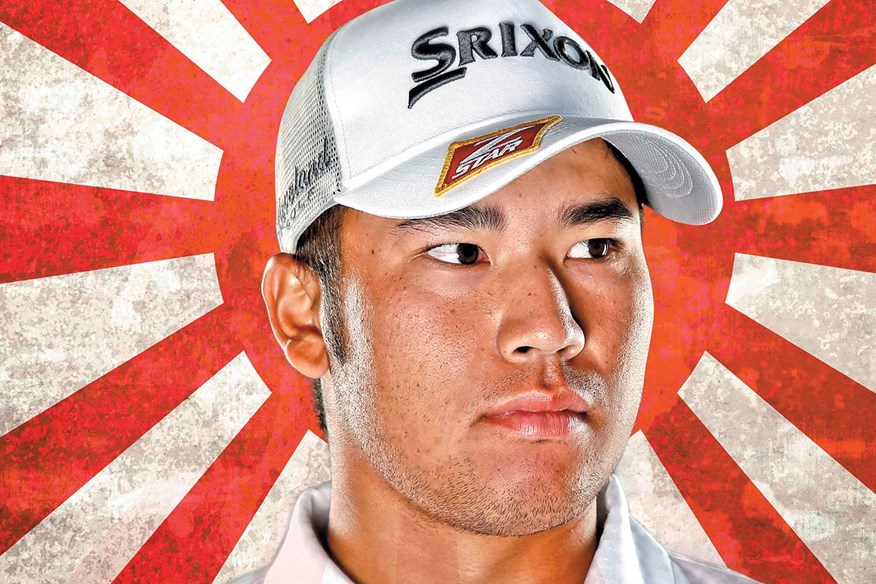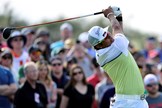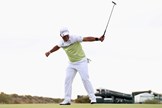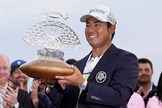Get to know Japan’s rising son
Last updated:
They call the last few months of the year golf’s ‘silly season’, but there has been nothing ridiculous about Hideki Matsuyama’s recent form. Since finishing 5th in the Tour Championship at the end of September, Japan’s top golfer has played in nine individual strokeplay events and won five of them.
It is a sensational run of form that has propelled him to the top of the PGA Tour money list, carried him to a career-high 6th position in the Official World Golf Rankings and prompted a lot of people to start asking: could this 24-year-old be golf’s next big thing?
It’s impossible to overlook Matsuyama’s case for golfing superstardom. As an amateur, the man from Shikoku Island won two Asia-Pacific Amateur Championships, received an R&A scholarship, steered his country to success in the World University Games, won a professional event on the Japan Tour and reached World No.1.
Since turning professional in early 2013, he has won seven Japan Tour events, secured two PGA Tour titles, finished in the top 7 of three of the last eight majors and become the first Asian to taste success at a WGC event. “It’s a great victory for me,” he smiled after storming to a seven- stroke victory in November’s WGC- HSBC Champions. “I’m happy and thrilled and really speechless.”
Matsuyama might have been lost for words, but others weren’t. “Hideki just played unbelievable and it was a pleasure to watch. You can learn a lot from watching him play,” lauded joint runner-up Daniel Berger, while Scotland’s Russell Knox, who played with Matsuyama during the final two rounds, offered the following performance review.
“When Hideki is on, he is as good as anyone. He showed no weaknesses over the two days. He drove the ball well and is an extremely aggressive iron player. He made everything look very easy.”
Fast-forward a few weeks, swap China for the Bahamas and Matsuyama was again making things look easy. After 54 holes of the Hero World Challenge he was seven strokes clear of the field and seemingly set for a Sunday stroll. Then Henrik Stenson started charging and Matsuyama began stumbling.
By the time the pair reached the 18th the margin had been cut to two. And when the Japanese player’s approach to the final green flew over the back and Stenson’s nestled in 12 feet from the hole the gallery began getting excited. Would Matsuyama fail to get up and down? Were they about to see a play-off? No and no. The 24-year-old snuffed out the Open Champion’s challenge by caressing his third shot to tap-in distance. “It was a very classy chip,” admitted Stenson.
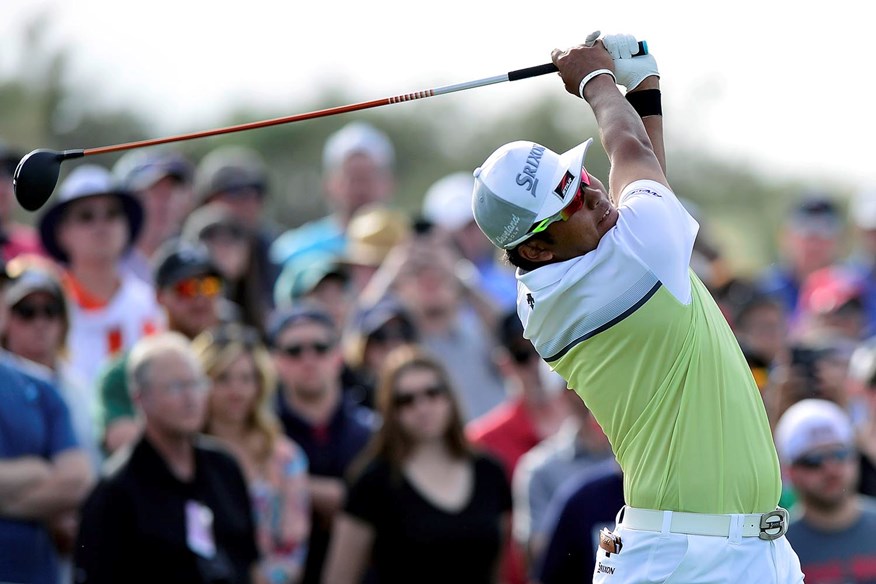
It was also the latest evidence of what Matsuyama calls his “step-by-step development through the past few years on the PGA Tour”. When he first turned professional, the Japanese player was sometimes too quick to let the red mist descend. It was a flaw that saw him throw away the odd victory and create the odd negative headline, most memorably at the 2014 WGC-Cadillac Championship where he issued a public apology after burying his putter in the 13th green.
Now, these temper tantrums are becoming increasingly irregular and his world ranking, bank balance and trophy cabinet are reaping the benefits. Not only did the new World No.5 earn more than $7 million on the course in 2016, he was also the only leading male professional to claim five victories in the calendar year.
“It’s going to give him a boat load of confidence going into next year,” admitted Tiger Woods after presenting Matsuyama with the Hero World Challenge trophy. As if to prove as much, the Japanese player instantly cast his mind forward to Augusta. “Starting next week all my focus and preparation will be for the Masters, that is my next goal,” he said.
Judging by the betting market for April’s Masters, Britain’s bookmakers are taking this statement of intent seriously.
At the time of writing, the best odds you can get on the 24-year-old winning the first major of the year is 18/1. This price makes him fifth favourite for the title, behind Rory McIlroy, Jordan Spieth, Jason Day and Dustin Johnson, but ahead of reigning Open Champion Henrik Stenson, Olympic Champion Justin Rose and a number of former Masters winners including Bubba Watson, Adam Scott and Phil Mickelson. Even allowing for his recent form, this will surprise a few people, but when you consider Matsuyama’s history at Augusta it seems about right.
The Japanese player first drove up Magnolia Lane in 2011. Back then, he was a fresh-faced amateur who most people expected to miss the cut. Most people were wrong. The 19-year-old shot rounds of 72, 73, 68 and 74 to finish in a tie for 27th and secure the Silver Cup as low amateur. “The applause from the gallery as I came up the hill on the 18th gave me chills,” he revealed after his final round. “I was happy to hear that and happy also that I was able to finish up with a birdie. That’s a great memory I can take home.”
More good feelings were banked in 2012, when he became one of the only amateurs in history to make the cut at Augusta twice. He didn’t play in 2013 and missed the cut in 2014, but his Masters love affair was rekindled in 2015, when he shot a final round 66 to climb into fifth place. Then, in 2016, he went into the final round just two shots off the lead.
A closing 67 would have been good enough to earn Matsuyama a Green Jacket, but he found trouble in the middle of his front nine and, in the end, could only manage a 73. “I learned a lot from that round,” he admits.
“I learned that you will be nervous no matter what you do and I hope that I can use this experience to my advantage when I’m in contention next time.”
Notice that he says ‘when’ he is in contention next time, rather than ‘if’. Matsuyama doesn’t speak much English at present (“I’m working hard on it, but for some reason it’s just not sticking in my brain,” he laughs), but the confidence he has in his ability and the excitement he has regarding places it could take him are not lost in translation. “I believe I can be Japan’s first male major winner,” he tells Golf World, before adding. “I really want to be the first Japanese to do so.”
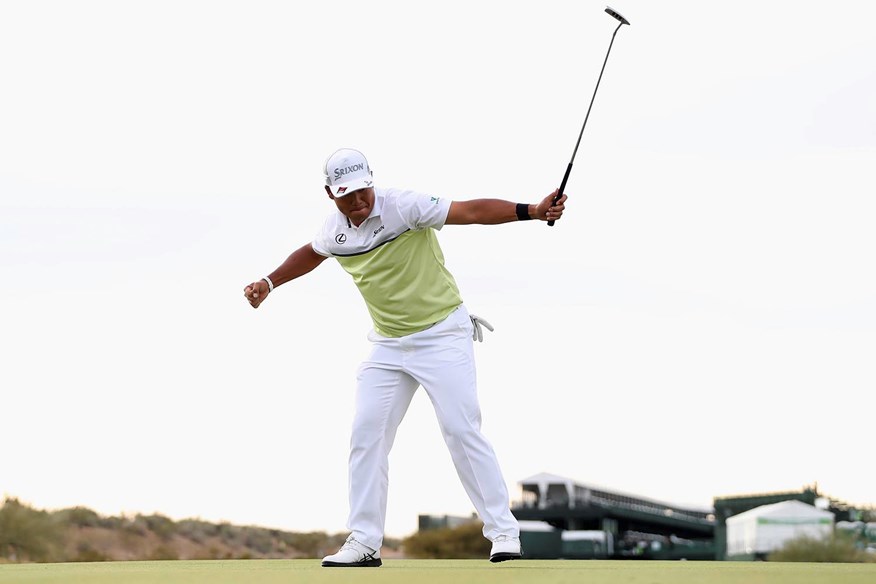
Whether the 24-year-old has the talent and temperament to power across a line that golfing legends like Isao Aoki (2nd in the 1980 US Open), Shigeki Maruyama (4th in 2004 US Open) and Jumbo Ozaki (World No.5 in 1997) could not quite breach is currently one of the biggest debates in the game. “I think he’ll be a major champion within the next couple of years,” says Jordan Spieth, but Tiger Woods isn’t quite so sure. “He’s going to be one of the top guys to beat for a very long time, but you’ve got to do it in the big events in the summer,” says the 14-time major champion.
Spieth and Woods may not quite be on the same page when it comes to Matsuyama’s major destiny, but they agree that a vital element of winning grand slam championship is holing important putts at important times.
The bad news for Matsuyama’s fans is that he missed a significant number of makeable birdie putts when in contention at last year’s US PGA and ranked a lowly 103rd in the strokes gained putting statistic over the course of the PGA Tour’s 2015/16 season.
The good news for Matsuyama’s supporters is that, thanks to some advice from countryman Hiroshi Iwata, he believes he is currently putting better than ever before. “I did not change anything dramatically,” he reveals. “I just realised several fix points in my putting stroke. This has helped me make crucial putts when it mattered the most and this has been one of the key reasons for my success.”
Another key reason has been the mental improvement we mentioned above, and a third has been his perennially impressive long game. If you ever require someone to hit an iron shot for your life, put Matsuyama very near the top of your list.
Despite not having a swing coach, the 5ft 11in powerhouse is one of the most consistent ball-strikers in the game. Last season, he ranked 3rd in strokes gained with approach shots, 2nd in proximity to the hole of all approaches from 200-225 yards, 9th in proximity to the hole of all approaches from 175-200 yards and 2nd in proximity to the hole of all approaches from 75-100 yards. It is hugely impressive stuff, but if you think Matsuyama is going to let it go to his head, think again.
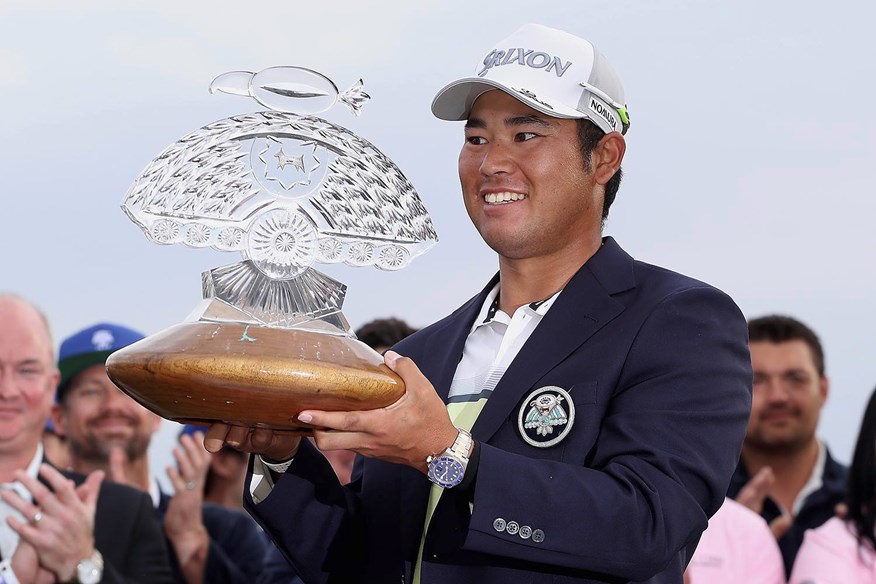
“I’m honoured people see my iron play as the strength of my game, but I don’t think so at all,” says the 24-year-old. “I believe I need to work on all parts of my game, especially if I want to be World No.1.”
For golf’s powerbrokers, the prospect of Matsuyama reaching top spot is salivating for a number of reasons. First, the fact he would be the first Asian golfer to secure that position could spark a huge boom in golfing participation throughout that
continent. Second, the fact the World’s top golfer was Japanese would put the sport (and Matsuyama himself) slap bang in the middle of the spotlight in the run-up to the 2020 Olympics in Tokyo. Third, along with Australia’s Jason Day, Europe’s Rory McIlroy and America’s Jordan Spieth, he could form a young, hungry, diverse and ultra-talented global fourball that thrills fans globally.
We are excited just thinking about the above, but if you think Matsuyama is going to buy into the hype being created around him, think again. “I am happy my ranking is going up, but I know there are still a lot of great players ahead of me, and that just gives me more incentive to work harder,” he states.
All of which just leaves us time to probe his plan for the upcoming year. “Focus on one shot at a time,” he says. “That is all you can do and you should do. If I do that and perform at my best, I believe my results will take care of themselves.”
How to hammer it like Hideki!
Luther Blacklock says Matsuyama’s golf swing is better than textbook. Here he reveals the six key lessons you can learn from the Tour’s best player from tee to green.
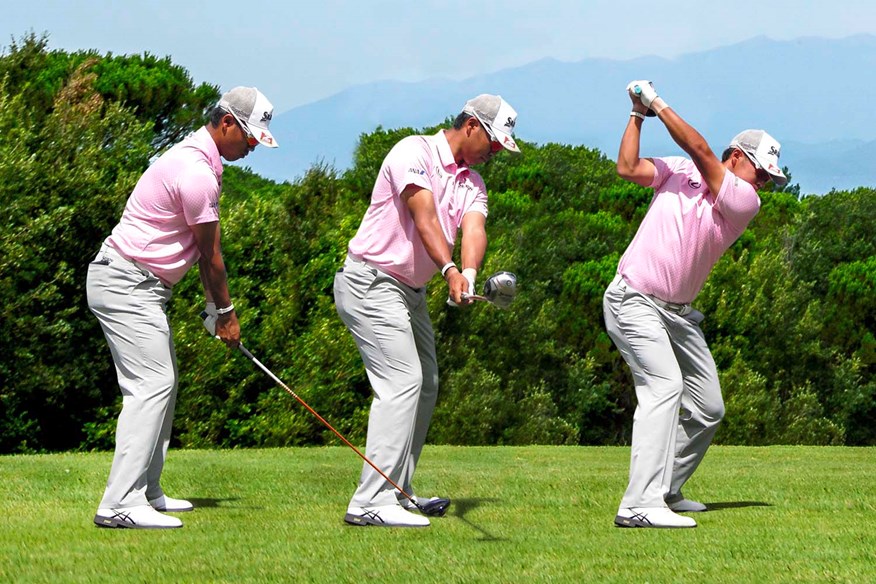
1 Tilt spine slightly to right Tilt spine slightly to right You can’t see it too well from this angle, but Hideki sets up with spine tilted slightly to the right at address. His left arm, clubshaft and ball also form a perfectly straight line.
2 Ignite the left shoulder Ignite the left shoulder Like Adam Scott, Hideki gets the club moving with his shoulders – in particular by turning the left shoulder under his throat. His wrists are slightly under-hinged here. Great for the driver.
3 Allow right hip to turn Allow right hip to turn Hideki’s quiet wrist action facilitates a shoulder turn of 100-plus degrees. And because his shoulder turn is so good, look how much his right hip has moved back. No stack and tilt here!
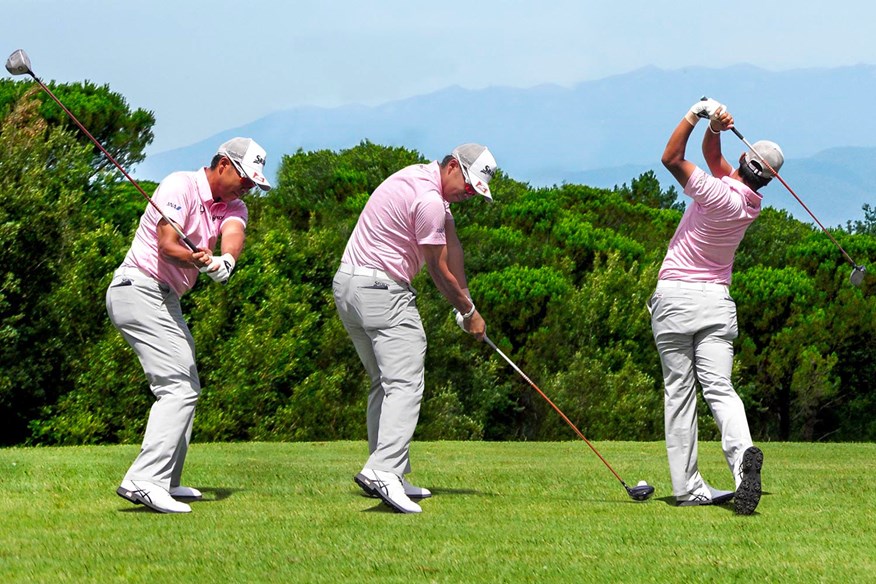
4 Leverage the ground If you resist your shoulder turn with your right hip you’ll not only damage your back, you’ll never be able to hit this position, where your knees squat slightly as you apply force to the ground.
5 Hit it slightly on the up Hideki has lost some height here but it’s nothing to worry about. His left shoulder rises to compensate and helps him hit up on the ball. He’s fantastic coming into impact.
6 Hold your spine angle My only minor criticism of Hideki’s technique is that he stands up a little too much in his finish. Ideally, I’d like to see him retain the spine angle he created at address into his followthrough.
